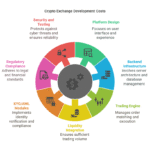Have you ever felt like you’re getting in your own way? Most of us have experienced moments when our thoughts become the biggest roadblocks to success. The truth is, many people unknowingly sabotage their progress through negative thinking patterns. These patterns, which psychologists call mindset traps or cognitive distortions, can prevent you from achieving your goals and reaching your full potential.
The good news is that recognizing these traps is the first step to overcoming them. By understanding how your mind might work against you, you can develop strategies to think more productively and confidently move forward. Let’s explore the ten most common mindset traps that might be holding you back from the success you deserve.
1. Black and White Thinking
Black and white thinking happens when you view situations as all-or-nothing, with no middle ground. You might think, “If I don’t get a perfect score on this presentation, I’m a complete failure,” or “Either I achieve my goal exactly as planned, or I’ve accomplished nothing.” This extreme perspective ignores the possible outcomes between absolute success and total failure.
Breaking free from black-and-white thinking requires recognizing the shades of gray in every situation. Instead of labeling outcomes as complete successes or utter failures, look for partial wins and learning opportunities. Replace absolute statements with more balanced perspectives, like, “I didn’t perform as well as I hoped, but I did several things right, and now I know what to improve next time.”
2. Fortune Telling
Fortune telling occurs when you predict adverse outcomes without any objective evidence. You might think, “There’s no point in applying for that position because I’ll never get it,” or “This new project will be a disaster.” When you engage in fortune telling, you create anxiety about things that haven’t happened yet and may never happen at all.
To overcome this trap, challenge your predictions by asking, “What evidence do I have that this will turn out badly?” Often, you’ll find your pessimistic forecasts are based on fear rather than facts. Create a habit of questioning your predictions and considering multiple possible outcomes, including positive ones. This opens your mind to opportunities you might otherwise miss.
3. Confirmation Bias
Confirmation bias is our tendency to notice and remember information that confirms what we already believe while ignoring contradictory evidence. If you think you’re bad at public speaking, you’ll focus on every stumble and mistake while overlooking the parts of your presentation that went well. This selective attention reinforces your negative self-image.
Fighting confirmation bias means actively looking for evidence that challenges your thoughts. If you think you’re not creative, intentionally list examples of innovative solutions you’ve come up with. Seek feedback from others who might see strengths you overlook. By gathering a more complete picture, you can develop a more accurate and often more positive view of yourself and your abilities.
4. Fixed Mindset
A fixed mindset is the belief that your talents and abilities are static traits that can’t be developed. People with fixed mindsets avoid challenges that might reveal their limitations and give up quickly when facing obstacles. They see effort as fruitless and criticism as a personal attack, severely limiting their growth potential.
Adopting a growth mindset means believing your abilities can be developed through dedication and hard work. This view transforms failures from proof of inadequacy into valuable learning opportunities. When you encounter setbacks, remember that struggle is part of the learning process, not evidence that you lack talent. Celebrate effort as much as achievement and see challenges as chances to grow.
5. Emotional Reasoning
Emotional reasoning happens when you mistake feelings for facts. You might think, “I feel overwhelmed by this project, so it must be impossibly difficult,” or “I feel like an impostor, so I must not belong here.” While emotions provide essential information, they aren’t always reliable indicators of reality.
To combat emotional reasoning, practice separating your feelings from your factual assessment of situations. Acknowledge your emotions without allowing them to dictate your conclusions. Ask yourself, “What would I think about this situation if I felt differently?” This creates space between feelings and facts, allowing for more objective decision-making even when emotions run high.
6. Self-Limiting Labels
Self-limiting labels are rigid, negative ways you define yourself that create artificial boundaries. Statements like “I’m not a math person,” “I’m terrible with technology,” or “I’m just not cut out for leadership” become self-fulfilling prophecies that discourage growth and limit your potential.
Overcoming self-limiting labels starts with recognizing them as choices rather than facts. Replace fixed labels with growth-oriented language that acknowledges room for development. Instead of “I’m not creative,” try “I’m developing my creative skills.” Add “yet” to limitation statements: “I don’t understand this concept yet.” This simple shift opens possibilities that rigid labels close off.
7. The Comparison Trap
The comparison trap catches you when you habitually measure yourself against others in ways that diminish your accomplishments. Social media makes this trap especially common, as people compare their behind-the-scenes reality to others’ highlight reels. These comparisons often lead to feelings of inadequacy and shame.
Free yourself from the comparison trap by focusing on your own progress rather than others’ achievements. Use others’ success as inspiration rather than comparison points. Everyone’s journey is unique, with different starting points, resources, and challenges. The only significant comparison is between where you are today and where you were yesterday.
8. The Perfectionism Trap
The perfectionism trap sets impossible standards that prevent action and completion. Perfectionists often struggle to start projects for fear of imperfection or get stuck in endless revisions, never feeling their work is good enough to share. This crippling standard leads to procrastination, missed opportunities, and burnout.
Escaping perfectionism means embracing “good enough” and valuing progress over perfection. Set task time limits and honor them even when work doesn’t feel perfect. Remember that completed imperfect work creates far more value than perfect work never finished. Start viewing mistakes as valuable feedback rather than evidence of failure.
9. The Should Statements
Should statements are rigid rules about how you or others think, feel, or behave. Thoughts like “I should always be productive,” “I should never need help,” or “Successful people should always feel confident” create unnecessary pressure and guilt when reality inevitably falls short of these ideals.
Breaking free from should statements requires questioning their source and validity. Ask yourself where these rules come from and whether they’re helping you. Replace “should” with preferences or aspirations: “I would prefer to be more productive today” instead of “I should always be productive.” This shift reduces guilt while maintaining motivation.
10. Unrealistic Timeframes
Setting unrealistic timeframes means condensing the time needed to accomplish goals. Expecting expert-level skills after minimal practice or significant results from new habits within days sets you up for disappointment. This impatience leads to abandoning worthwhile pursuits when instant success doesn’t materialize.
Overcoming this trap requires creating tiered goals with realistic timelines. Set multiple levels of success for each goal, celebrating small wins along the way to significant achievements. Remember that most “overnight successes” result from years of consistent effort. Be patient with your progress and trust the process of gradual improvement.
Case Study: Jerry’s Mindset Transformation
Jerry always considered himself “just not a business person,” despite dreaming of starting his own company. When he finally took the leap and launched a small consulting firm, his mindset traps immediately surfaced. After his first potential client declined his proposal, Jerry thought, “This is a complete failure. I knew I shouldn’t have tried this.” He began predicting that all future pitches would fail and considered giving up entirely.
Fortunately, Jerry joined a business coaching group where he learned about mindset traps. He realized he was engaging in black-and-white thinking, fortune telling, and self-limiting labels. With his coach’s help, Jerry began reframing his thoughts. Instead of seeing the declined proposal as a total failure, he asked for feedback and discovered specific improvements he could make. Rather than predicting future rejections, he prepared thoroughly for each new opportunity.
Six months later, Jerry had secured five clients and was steadily growing his business. When facing setbacks, he now viewed them as learning opportunities rather than confirmation of inadequacy. By recognizing and addressing his mindset traps, Jerry transformed his approach to challenges and opened himself to success he previously thought impossible.
Key Takeaways
- Recognize black and white thinking and look for the middle ground instead of viewing outcomes as total success or complete failure.
- Challenge fortune telling by questioning pessimistic predictions and looking for evidence rather than assuming the worst.
- Combat confirmation bias by actively seeking information that contradicts your limiting beliefs about yourself.
- Develop a growth mindset that views abilities as qualities you can develop rather than fixed traits.
- Separate emotions from facts when making assessments to avoid emotional reasoning.
- Replace self-limiting labels with growth-oriented language that acknowledges room for development.
- Focus on your progress rather than comparing yourself to others.
- Embrace “good enough” and value progress over perfectionism.
- Question the source and validity of your “should” statements and replace them with preferences.
- Set realistic timeframes for goals and celebrate small wins and significant achievements.
Conclusion
Mindset traps are subtle but powerful forces that sabotage your success without realizing it. They shape how you interpret events, influence your emotional responses, and ultimately determine whether you persevere or give up in the face of challenges. By learning to recognize these thinking patterns, you gain the power to challenge and change them before they derail your progress.
The journey to success isn’t just about external strategies and actions—it’s equally about developing mental resilience and flexibility. Remember that changing thought patterns takes time and practice. Be patient with yourself as you overcome these mindset traps, and celebrate your progress. With awareness and consistent effort, you can transform your thinking and remove the mental roadblocks that have been standing between you and the success you deserve.






